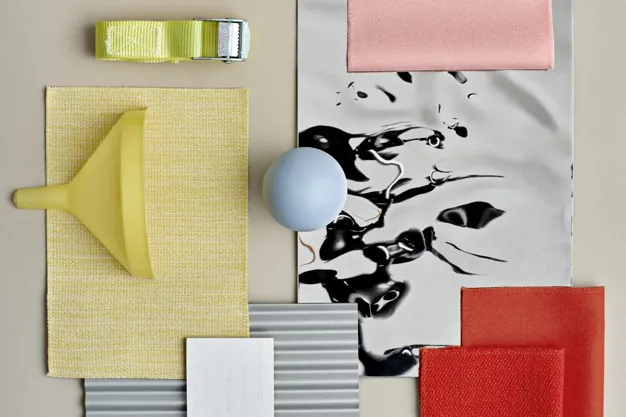Colours, be they bright or dark, vibrant or subtle, influence our perception of spaces and how we feel on an individual level when in the presence of them. Curious to learn more about the effect that colour can have on our sensory apparatus and how colour relates to the scientific field of neuroaesthetics, Muuto interviewed Executive Director of the International Arts + Mind Lab at Johns Hopkins University, Susan Magsamen.

What is neuroaesthetics?
'In its simplest form, neuroaesthetics is our understanding of how our brain changes on the arts. It's about looking deeply into how our sensory, perceptual and motor systems work when we create or appreciate art and how these systems engage with the central nervous system around things such as rewards, pleasure, emotion and cognition.'
How do different art forms help us understand ourselves and the world around us? How do they affect our behaviour?
'Art, in its many forms, lets us fully express ourselves, process and make meaning from human experiences, big and small. The act of art-making can have a very calming, restorative effect on body and mind, which is important to successfully navigating life's stressors. Art also bonds us to others, building bridges of understanding and empathy between different groups of people.'
If we zoom in on the aspect of colour, can you tell us about the role that it can play within neuroaesthetics and how it can impact our wellbeing?
'Colour is such an interesting topic in terms of the part that it plays in the world, being vital for cues of survival on a basic evolutionary level as hot colours like red, yellow and orange are better seen by the human eye than greens and blues. We also know that our perception of colour is highly cultural; a given colour might mean something in one culture and something entirely different in another. When we bring colour into design, we have to be mindful about what is happening from both a neurobiological perspective as well as a cultural and social perspective.'
What elements shape our perception of a given colour?
'One of the things that is so interesting to me about colour is that while individual colours are important, the actual hue of a colour plays an important part in how we respond to it on an individual level. As an example, things with pinker hues tend to have a more calming and soothing effect on us. Understanding hue is an important aspect when thinking about colour and so is context. Our perception of a given colour changes in relation to the colours that surround it.'
How do you think colour can impact the ways in which we experience our surroundings?
'The thing about colour is that we all see it differently, depending on our biology. The cones in my eyes are different from the cones in yours and the way that my brain crushes colour is part of my perception; this comes down to genetics, to life experience, to conditioning. We must think about colour as being highly subjective. Though you are designing a space from your perspective and from the idea that a certain colour will have a certain effect on the people inhabiting it, that may not necessarily be true. Instead, we should consider colour more as a tool within a palette that includes volume, texture and all the other objects that make a space. Colour is highly contextual, and we should approach it as such.'
Looking towards objects such as furniture, how do you find that the colours of these can affect our perception of a room as compared to the colour of a wall or ceiling?
'The objects within a space have a direct relationship to the space and its colours, meaning that they can affect each other as well as our perception of them. Say you put a dark green leather sofa in a room with dark brown walls: they'll change each other's colour in a way that wouldn't happen if you had placed the sofa up against a white wall, which would have made it more enriched. You must be intentional about what you are trying to achieve when placing objects within a space, as not only the colour but also the textures of these objects can, in theory, be disturbing or noisy. All these variables play together in helping you achieve what you are trying to do within the space.'
Source: Muuto
